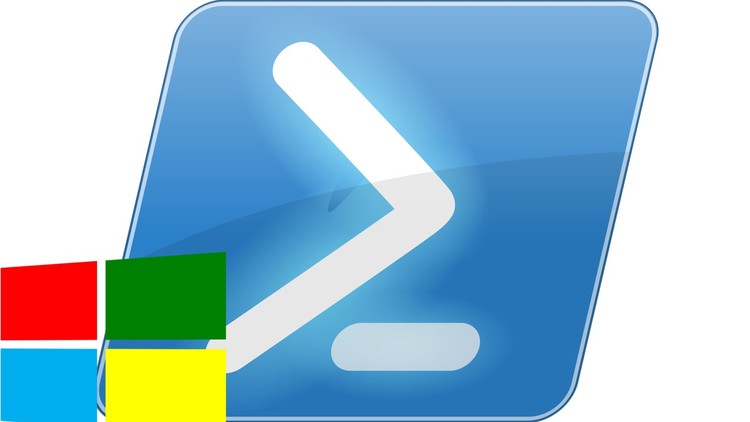Windows Server with PowerShell
- Description
- Curriculum
- FAQ
- Reviews
This course is aimed to IT Pros and is supposed to give the viewer the information they need to know to get started with PowerShell and how to manage Windows Server 2016 with its help. The goal is to provide coverage of initial server’s tasks including topics like Finding and Discovering Commands, Interpreting Command Help, Setting up PowerShell Remoting, Setting up the Network Configuration, Using Best Practice Analizer.
Sections 1-4 of the course are targeted to help to automate and script daily tasks. There are lots of live demonstrations how to use PowerShell commands. I hope it will help to do your job more efficiently.
This course will help you to:
- Manage Windows Server 2016 Roles and Fetures;
- Use Windows Server 2016 PowerShell Integrated Scripting Environment (ISE);
- Find and Discover Commands;
- Perform the Basic Tasks, such as: Renaming Computer, Changing the Time Zone, Finding/Starting/Stopping a Service on Windows Server 2016 ; Changing IP Configuration;
- Learn Remoting Concepts on Windows Server 2016;
Sections 5-6 of the course are aimed to IT Pros and is supposed to give the viewer the information they need to know to get started with PowerShell and how to manage Windows Server 2016 DNS with its help. The goal is to provide coverage of DNS server’s tasks including topics like an Overview of DNS Main Concepts, How to Install a DNS Role (on a local computer and a remote one), How to Add Different Types of Zones, Records, etc.
Section 7 of the course is aimed to IT Pros and is supposed to give the viewer the information they need to know to get started with PowerShell and how to manage Windows Server 2016 DHCP with its help. The goal is to provide coverage of DHCP server’s tasks including topics like an How to Install a DHCP Role, How to Add/Modify Scopes or Superscopes, Scope Options, etc.
The course is targeted to help to automate and script daily tasks. There are lots of live demonstrations how to use PowerShell commands and a Server’s GUI.
This course will help you to:
- Configure primary and secondary zones
- Configure stub zones
- Configure conditional forwards
- Configure zone and conditional forward storage in Active Directory
-
8Using HelpVideo lesson
-WhatIf parameter;
Working with examples from Help files;
-
9Using Help (continued)Video lesson
- Learning to work with the Help
-
10Using Help (continued)Video lesson
-
11Get-Help Command OptionsText lesson
-
12Save HelpVideo lesson
-
13Updating and saving help filesVideo lesson
-
14Demo: Updating and saving help filesVideo lesson
-
15Renaming the ComputerVideo lesson
In this lecture we've used the following commands to:
Rename Computer
Find out a Hostname
Restart Computer
Update HelpSave Help
-
16Renaming the Computer (continued)Video lesson
-
17Changing the Time Zone SettingsVideo lesson
In this lecture we've used the following commands to:
Change the Time Zone
-
18Turning on Remoting in a Non-Domain EnvironmentVideo lesson
In this lecture we've used the following commands to:
Setup and configure PS Remoting
-
19Finding and Starting the ServiceVideo lesson
In this lecture we've used the following commands to:
Find the service
Put the Service in Automatic State
-
20Disabling PSRemote, Stopping the ServiceVideo lesson
In this lecture we've used the following commands to:
Disable PS Remoting
Put the Service in Manual State or Turn it off
-
21Running PS commands on a remote computerVideo lesson
In this lecture we've used the following commands to:
Run the PS Commands on the Remote Computer
-
22Starting a New Remote PS Session, Passing Credentials, Using VariablesVideo lesson
In this lecture we've used the following commands to:
Create a PS Session
Get the Credentials
-
23Using PS SessionVideo lesson
In this lecture we've used the following commands to:
Get the List of PS Sessions
Enter the PS Sessions
-
24Changing IP configurationVideo lesson
In this lecture we've used the following commands to:
Get IP Configuration
Change IP configuration
Get Network Adapters Info
-
25Setting DNS ClientVideo lesson
In this lecture we've used the following commands to:
Change/Set DNS Client Configuration
-
26Resetting IP Configuration, Enabling DHCPVideo lesson
In this lecture we've used the following commands to:
Remove Network Configuration
Set DHCP configuration on the Interface
-
27Finding and Installing New Roles and FeaturesVideo lesson
In this lecture we've used the following commands to:
Get Available Roles and Features
Install the Required Role/Feature
-
28Uninstalling Windows Roles and FeaturesVideo lesson
In this lecture we've used the following commands to:
Uninstall Windows Features/Roles
-
29Enabling, Disabling Firewall Profiles and Creatiing Firewall RulesVideo lesson
In this lecture we've used the following commands to:
Set the Firewall profiles
Turn On/Off the Firewall profiles
Create the Firewall Rules
-
30Using the Best Practice AnalizerVideo lesson
In this lecture we've used the following commands to:
Check BPA
Get BPA
Work with BPA
-
31Determining and Changing Current LocationVideo lesson
-
32Determining and Changing Current Location (continued)Video lesson
-
33Determining and Changing Current Location (continued)Video lesson
-
34Determining and Changing Current Location (continued)Video lesson
-
35Getting the Files in a DirectoryVideo lesson
-
36Learning Pipelines and Objects' Properties and MethodsVideo lesson
-
37Pipeline (continued)Video lesson
-
38Working with PSDrives, New-ItemsVideo lesson
-
39Working with Select-Object, Where-Object CommandsVideo lesson
-
40Commands Used to Turn on Remoting in a Non-Domain envText lesson
-
41Commands Used to Find and start the ServiceText lesson
-
42Commands Used to Disable PSRemote and Stop the ServiceText lesson
-
43Commands Used to Run PS Commands on a Remote ComputerText lesson
-
44Commands Used to Start a New Remote PS Session, Pass Credentials, UseText lesson
-
45Commands Used to Manage PS SessionText lesson
-
46Commands Used to Change IP ConfigurationText lesson
-
47Commands Used to Set DNS ClientText lesson
-
48Commands Used to Reset IP Configuration and Enable DHCPText lesson
-
49Commands Used to Find and Install a Role or FeatureText lesson
-
50Commands Used to Uninstall a Role or FeatureText lesson
-
51Commands Used to Enable, Disable Firewall Profiles and Create Firewall RuleText lesson
-
52Commands Used for Best Practice Analyzer (BPA)Text lesson
-
53Commands Used to Determine and Change Current LocationText lesson
-
54Commands Used to Get the Files in a DirectoryText lesson
-
55Commands Used in Pipeline and Objects' Properties and MethodsText lesson
-
56Commands Used in Pipeline (continued)Text lesson
-
57Commands Used in Working with PSDrives, New-Items.Text lesson
-
58Commands Used in Working with Select-Object, Where-Object CommandsText lesson
-
59Test your PowerShell Commands Knowledge.Quiz
-
63DNS Role InstallationVideo lesson
-
64Launching DNS ManagerVideo lesson
-
65Adding Forward Primary/Secondary Lookup Zone; Installing DNS Role RemotelyVideo lesson
-
66Adding Zones in PS; Adding a Conditional ForwarderVideo lesson
-
67Adding Zones in PS; Adding a Conditional Forwarder (continued)Video lesson
-
68Checking if the DHCP Role is InstalledVideo lesson
-
69Installing DHCPVideo lesson
-
70Instaling/Removing DHCP Role with PowerShellVideo lesson
-
71Authorizing/Unauthorizing the DHCP ServerVideo lesson
-
72DHCP Related FilesVideo lesson
-
73BindingsVideo lesson
-
74Adding a New ScopeVideo lesson
-
75Adding a New Scope (continued)Video lesson
-
76Managing Scope OptionsVideo lesson
-
77Managing Scope Options (continued)Video lesson
-
78SuperscopesVideo lesson
-
79PoliciesVideo lesson
-
80Some Extra DHCP Related CommandsVideo lesson

External Links May Contain Affiliate Links read more





